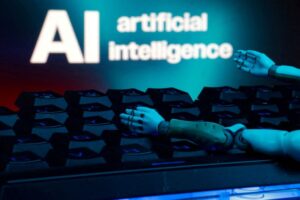How Nvidia Emerged as the Catalyst of the AI Revolution

How Nvidia Became a Leader in the AI Revolution
Nvidia has established itself as a pivotal player in the past few years, particularly in the field of artificial intelligence (AI). The company’s innovations in graphics processing units (GPUs) have made it an essential component in the development, training, and deployment of AI technologies. This article explores how Nvidia has played a crucial role in the AI revolution.
The Foundation: Graphics Processing Units (GPUs)
Evolution of GPUs
Initially, GPUs were designed to enhance graphics performance in video games. Over time, however, their parallel processing capabilities were recognized as highly beneficial for various computational tasks beyond gaming. This realization opened new avenues for using GPUs in data-intensive fields like machine learning and AI.
Key Technologies
Nvidia’s advancements in GPU technology facilitated the emergence of deep learning, a subset of machine learning that relies on large neural networks. The ability of GPUs to handle massive amounts of parallel data makes them ideal for training these complex models efficiently.
Nvidia’s Impact on AI Development
CUDA Programming Model
One of Nvidia’s groundbreaking contributions is the CUDA (Compute Unified Device Architecture) programming model. CUDA allows developers to write software that takes full advantage of the GPU’s capabilities. This made it easier for researchers and engineers to implement algorithms that are fundamental to AI and deep learning.
Software Ecosystem
Alongside GPU hardware, Nvidia has developed a robust software ecosystem that enhances the usability of its products. Platforms like TensorRT and the Nvidia deep learning SDK accelerate the deployment of AI models, making it quicker for companies to bring their ideas to market.
Collaboration with Industry Leaders
Nvidia has forged partnerships with leading technology companies and research institutions. Collaborations with organizations such as Google, Microsoft, and various universities have propelled advancements in AI, allowing for more rigorous research and innovation. These partnerships have further established Nvidia as a central force in the AI community.
Applications in Various Fields
Healthcare
Nvidia’s technology is making significant strides in healthcare, where AI is being used for diagnostics, personalized medicine, and drug discovery. For instance, AI models trained on vast amounts of medical data can help identify diseases earlier and find the best treatments for patients.
Autonomous Vehicles
Another area where Nvidia is making an impact is in self-driving cars. The company’s GPUs are integral to the mixed-reality and sensor fusion technologies that enable vehicles to interpret their surroundings, make decisions, and navigate safely.
Financial Services
In finance, Nvidia’s AI solutions are being used for algorithmic trading, risk management, and fraud detection. By analyzing large datasets quickly, these tools help financial institutions make better decisions and enhance security.
The Future of AI with Nvidia
Continuous Innovation
Nvidia is not resting on its laurels. The company’s focus on continuous innovation means it is always looking to improve its hardware and software capabilities. Initiatives like the development of the RTX series, which integrates AI capabilities directly into the GPU, indicate Nvidia’s commitment to leading the charge in AI advancements.
AI Democratization
Nvidia is committed to making AI more accessible to a broader audience. By providing tools and resources, including free educational content on AI, the company is helping to train the next generation of developers and researchers in AI technologies.
Key Takeaways
- GPU Evolution: Nvidia transformed from gaming graphic cards to GPUs crucial for AI and deep learning.
- CUDA Model: The CUDA framework made it easier for developers to utilize GPU capabilities.
- Industry Collaborations: Partnerships with major tech firms have accelerated AI research and applications.
- Diverse Applications: From healthcare and autonomous vehicles to finance, Nvidia’s technology supports innovation across various sectors.
- Future Outlook: Ongoing innovation and a focus on accessibility highlight Nvidia’s commitment to leading AI advancements.
Through these efforts, Nvidia has not only shaped the current landscape of AI but is also poised to influence its future extensively.





